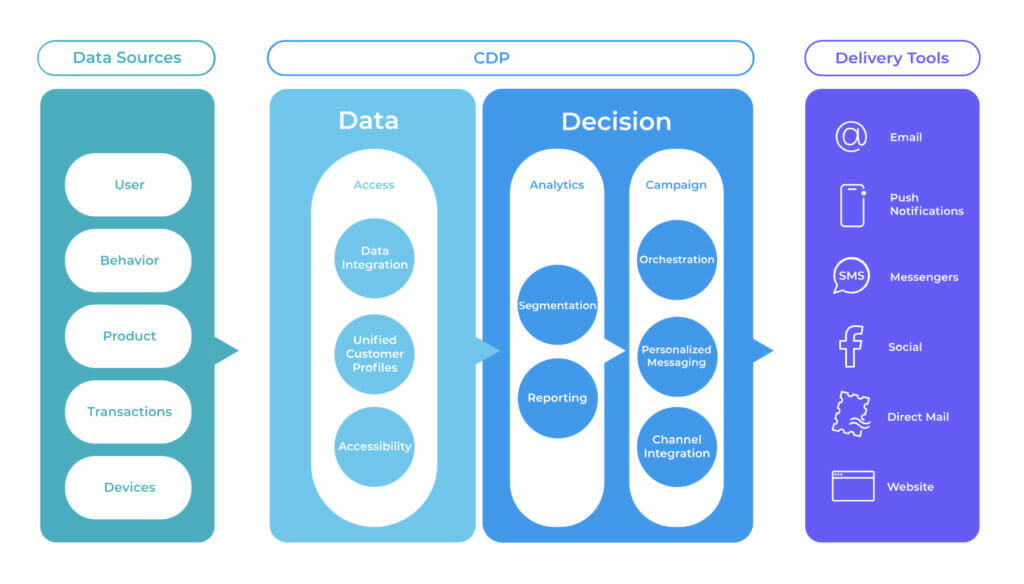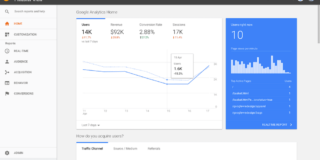As is tradition with our other tool comparisons, this is not a dry feature-by-feature comparison of Segment and Mparticle. We won’t proclaim one is the ‘best’ customer data platform (CDP) for which every business, including yours, should use. Many factors, including your budget, company size, and current data workflow, will determine if either platform is the right fit.
If you need a line by line feature breakdown, a quick Google search will serve you best in that case.
Instead, we’ll be covering the core use cases that customer data platforms address and explore whether Segment or Mparticle ultimately deserves a spot in your tech stack.
Table of contents
The Rise of CDPs
As businesses, both large and small, continue to focus on understanding the entire customer journey, data complexity and fragmentation remains an increasingly difficult challenge to solve.
CDP’s work to house all your data under one roof, allowing you to easily see how that data fits into the bigger picture for your business and customer experience. If you rely on multiple data collection tools such as Mixpanel and Amplitude, CDP’s are beneficial for ensuring your data is accurate, actionable, and easy to access.
Whether you’re looking to improve conversions or retention CDP’s can provide a holistic view of both your opportunities and areas for improvement.
As we wrote previously:
Back to those (early) days when Marketing Automation was just born, the world was web-centric. The situation is now completely different. Now users interact with digital products in much more complex and different ways than a decade ago…the more complex your stack is, the more customer data you are spreading across many different tools, and the more time you (or your engineering team) will need to reassemble the puzzle and get a full reasonable picture.
With marketing and analytics becoming increasingly complex, businesses need to know how to track and manage their data, and they need to know what to do with it. While using a CDP effectively requires a significant time investment in both education and capital, for those who want to maximize their marketing efforts or scale quickly can be the right call.
The most challenging barrier to Marketing Automation success is data integration between the various marketing systems of an organization.
David Raab Founder at CDP Institute
Use cases for CDP’s
Avoid Data Silos
The average business already has 17 unique technology applications housing customer data. Additionally, on average, businesses receive data and metrics from 28 unique sources. Without a central hub to process all that data, making data-driven decisions is all but impossible.
Worse yet, collecting all that data comes with a cost, and it’s not cheap.
Behind the glamor of powerful analytical insights is a backlog of tedious data preparation. Since the popular emergence of data science as a field, its practitioners have asserted that 80% of the work involved is acquiring and preparing data.
Edd Wilder-James
Collecting data that isn’t accessible or actionable across teams isn’t just inefficient; it actively harms your organization’s growth trajectory.
“Silos aren’t good to have — they create a less collaborative environment, slow the pace and productivity of your organization, and threaten the accuracy of your customer profile data” says Allie Decker at HubSpot.
Both Segment and Mparticle work to keep your teams aligned so you can deliver the best experience possible and know exactly how to serve your customers best. While early-stage companies may not see an immediate need for using a CDP, setting the groundwork before reaching accelerated growth can save time and frustration down the line.
Provide an Omnichannel Customer Experience
Having a bird’s eye view of all your data is critical for being a customer-centric brand. If your customer service team has insights into why customers are churning, but your sales team is left in the dark, that’s a problem. If your sales team finds themselves spending most of their time explaining your unique features, aligning with marketing to create educational content can go a long way in bridging the gap. Ultimately, having data all in one place can make it easier to notice patterns that could lead to a better product or service.
To be customer-centric, you need to speak to your customers, understand their wants and needs, and use data to inform ideas and decisions. Then comes the part where you actually start acting on the findings and feedback—experimenting with new offerings and ways of doing business to improve customers’ experience.
Source
Consistent messaging across your teams is also critical.
If your sales team is leading with one feature, but your customer service team has data on why another feature is more popular, that needs to be communicated.
CDPs consolidate all of this information in ways that CRMs or DMPs can’t, helping your brand develop personalized, consistent messaging for customers on all online and offline channels. If a customer visits your website and searches for a product – may even add an item to their shopping cart – but doesn’t buy anything, you want that information when reaching out to them in the future.
Tom Treanor
Segment a Brief Overview
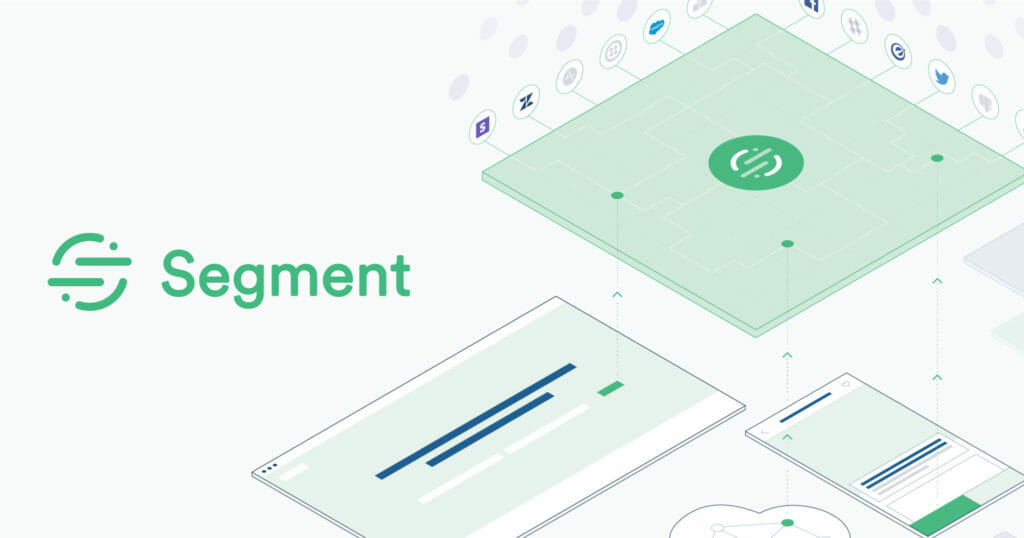
As of this writing, Segment is the clear industry leader in CDP’s boasting over 20k customers, including Bonobos, Instacart, Invision, and Staples. While suitable for web applications and mobile use cases, the general consensus based on digesting hundreds of reviews is that they are strongest for web applications. However, they certainly can be used by businesses with a mobile-first focus.
Web-based interface to configure integrations. This has saved our engineering team hundreds and perhaps even thousands of hours of configuration, integration, and development of our tracking implementation and integration with third-party libraries.
G2 Reviewer
Though it should be noted Segment’s industry leader status is baked into their pricing, with many small businesses reporting it can get pricey fast. As one reviewer shared: “Cost can skyrocket pretty quickly. Must be considered.”
Mparticle a Brief Overview
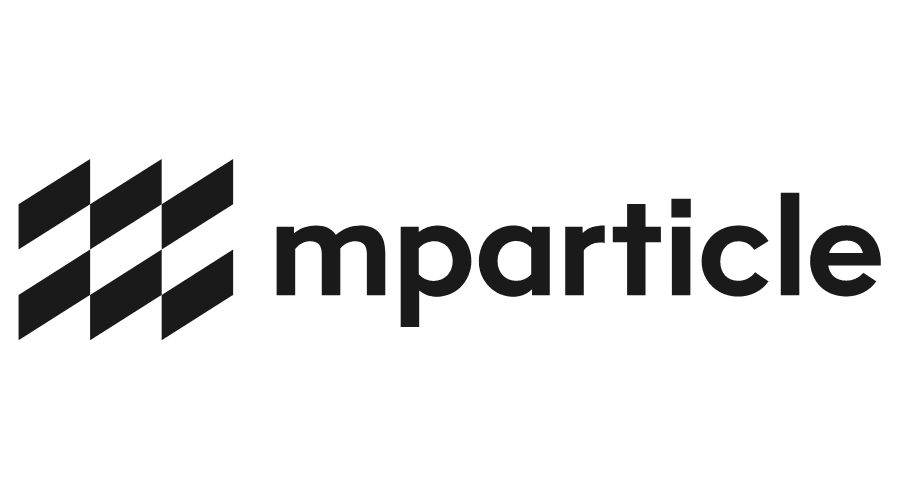
Though flying under the radar to some, Mparticle certainly should not be overlooked. With clients such as Paypal, Starbucks, and Venmo on their roster, they continue to make a splash.
Having recently raised $45 million in Series D funding last year, they are focused on creating “a best-in-breed combination of independent solutions that can be integrated seamlessly.”
Their partnership with LiveRamp was noteworthy, allowing customers to make better use of both first-party and third-party data. In many cases, Mparticle was viewed as more budget-friendly. In addition, given the recent adjustments due to COVID-19, they have doubled down on serving the travel and hospitality industries more effectively.
They say that necessity is the mother of all invention, and since the onset of the COVID-19 pandemic, no other vertical has been so severely impacted quite like travel and hospitality. Across many companies, the mandate became clear: do more with less. Less budget, less people, and less resources, but produce the same or better results.
Michael Katz the cofounder and CEO of mParticle
Founded within a year of one another, Mparticle and Segment have a long history of calling each other out. It’s clear, the leadership of both companies are passionate and committed to building a world-class customer data platform.
Let’s look at a few more factors to consider:
Privacy
Given the increased rules and regulations regarding consumer data rights, CDP’s are tasked with the admittedly herculean effort of making sure data is collected legally, in addition to making it easy for businesses to collect the data they need.
I spoke to Lorenzo Santos, consultant and Director, Product Analytics & Growth at ConsenSys to learn more about his CDP of choice.
I use Segment because it’s an all-in-one solution for instrumenting a high-fidelity product analytics system. With Segment, our product marketing team can easily leverage data to power customer-first marketing experiences. Our engineering team has embraced Segment because marketers can enable data integrations via a dashboard without needing an engineer to push code. And as our resident data wrangler, I love the Protocols feature, which helps me validate and enforce data quality integrity at scale with automated QA rules.
He further explained:
In addition to a great product, I believe Segment is an industry leader when it comes to privacy and data collection. A lot of tech companies say they care about company data and security, but when push comes to shove, it’s just lip service.
Certainly, Mparticle has also made GDPR and other collection regulations a priority.
As a data processor, we’ve made significant investments to prepare the business and our clients’ businesses for the impending GDPR enforcement deadline this May. This includes conducting a Privacy Impact Assessment, updating our Data Protection Agreement, appointing a Data Protection Officer, assembling a GDPR Taskforce, and dedicating engineering resources to enhance the platform with additional GDPR compliance features.
Tim Norris VP Sales
Integrations
From an integrations perspective, both Mparticle and Segment have invested heavily in ensuring that they work with a variety of tool stacks.
With each offering hundreds of integrations with some of the most popular analytics and data tools.
Mparticle integrations – see the full list here.

Segement integrations – see the full list here.
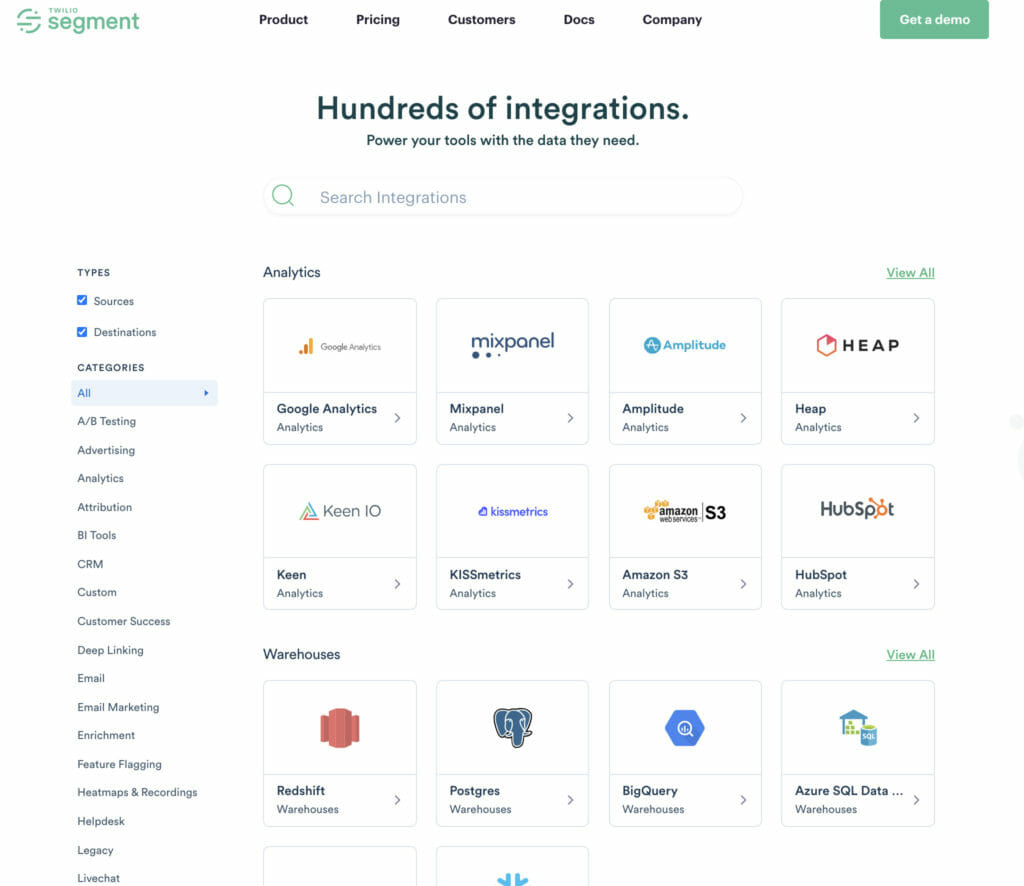
Customization and Ease of Us
Both Mparticle and Segment appear to have a learning a fairly steep learning curve, requiring devs’ assistance in many cases.
While they both have made strides in making their integrations and tools easy to use for the non-technical-marketer, it does take some time to get up and running.
It’s so vast that it’s hard to understand everything that’s going on. The UI is slick, but sometimes there are hard to understand functions because of the way it’s set up. Not a whole lot of feedback from the software telling me exactly what is going on. For instance, I can make connections, but the connections aren’t actually set up on the back end until they are able to finish the connection process, which can take up to 48 hrs. None of which is told to you by the software itself and is only explained by a client service rep.
Capterra Reviewer
Here’s how another G2 user shared his challenge with advanced customization using Segement.
Customization comes with a steeper learning curve for analytics developers. One can’t simply take a tagging strategy from Google Analytics or Tag Manager and copy / paste. You have to get familiar with specific concepts, like identify calls, which might not be intuitive for the non-initiate. Nonetheless, once you do understand the concept, it’s great!
Conclusion
Though customer service platforms are continuing to rise in popularity, not every business is at the stage of needing one. If you’re an a company store that only tracks one or two data sources, don’t feel forced to invest.
That said, CDPs can be a wise investment for those who need a one-stop-shop to organize and understand their data better. While Segment is the most established of the two, Mparticle continues to innovate and impress. Use this guide as a base to make your decision and if either stands out for your needs, most certainly request a demo.

